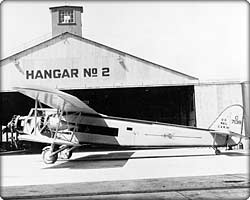Boeing Model 80
| Model 80 | |
|---|---|
 |
|
| Role | Airliner |
| Manufacturer | Boeing |
| First flight | July 27, 1928 |
| Introduction | September 20, 1928 with Boeing Air Transport |
| Retired | 1934 |
| Primary user | Boeing Air Transport |
| Number built | 16 |
| Unit cost |
$75,000 (Model 80A)
|
The Boeing 80 was an American airliner of the 1920s. A three-engined biplane, the Model 80 was built by the Boeing Airplane Company for Boeing's own airline, Boeing Air Transport, successfully carrying both airmail and passengers on scheduled services.
Boeing Air Transport was formed on February 17, 1927 by William Boeing to operate the Contract Air Mail (CAM) service between San Francisco and Chicago (CAM.18), taking over the route on July 1, 1927. The route was initially operated by single-engined Boeing 40A biplanes, which could carry four passengers, which provided a useful supplement to the subsidized revenue from carrying airmail.
In order to take better advantage of passenger traffic, Boeing decided that it needed a larger aircraft that was more suitable for passenger carrying, and in early 1928 designed a trimotor aircraft capable of carrying 12 passengers, the Model 80. Unlike the Fokker F.VII and Ford Trimotors operated by other airlines, the Model 80 was a biplane, chosen to give good takeoff and landing performance when operating from difficult airfields on its routes, many of which were at relatively high altitude. The fuselage was of fabric covered steel and aluminium tube construction, and carried its 12 passengers in three-abreast seating in a well-appointed cabin. The flight crew of two sat in an enclosed flight deck forward of the passenger cabin. The wings were of fabric covered steel and duralumin construction, with detachable wingtips to aid storage in hangars.
The first Model 80, powered by three Pratt & Whitney Wasp radial engines, flew on July 27, 1928. It was followed by three more Model 80s before production switched to the improved Model 80A, which was longer, allowing 18 passengers to be carried, and was powered by more powerful Pratt & Whitney Hornet engines, first flying on July 18, 1929 and receiving its airworthiness certificate on August 20, 1929.
...
Wikipedia
